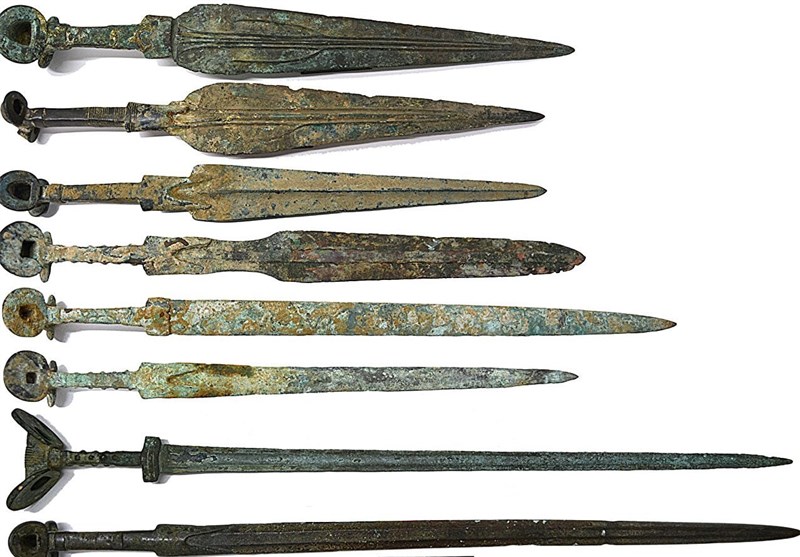First-Ever Imaging of Iranian Iron Age Swords Reveals Extensive Tampering by Smugglers
TEHRAN (Tasnim) – New research using neutron tomography has revealed significant modern modifications to ancient Iranian bronze swords, exposing the challenges of identifying authentic artifacts in the illicit antiquities trade.
For the first time, researchers have employed neutron tomography to study Iron Age Iranian bronze swords, uncovering extensive modern alterations made to enhance the commercial value of the weapons in the illegal antiquities market.
Iron Age Iranian bladed weaponry plays a vital role in understanding early metalworking techniques in the ancient Near East, a region central to metallurgical innovation. However, the practice of illicitly altering and forging ancient objects complicates the task of tracing the development of these techniques from 3,000 years ago.
Identifying such modifications accurately is not only essential for reconstructing ancient technological advancements but also aids in exposing and combating the practices of the illicit antiquities trade.
A team from Cranfield University, ISIS Neutron and Muon Source, and the British Museum led the study, applying neutron tomography to examine the internal structure of these artifacts. This method revealed the use of modern glue and tools in modifying the swords, findings published in the Journal of Archaeological Science under the title "Neutron tomography reveals extensive modern modification in Iron Age Iranian swords."
Neutron tomography, unlike X-ray imaging, is particularly effective in highlighting organic matter, such as glue used in these modifications, and revealing the structure of materials within an object. Though not yet routine in archaeological science, this method offers a significant advantage for analyzing pastiches—artifacts assembled from fragments of genuine ancient objects.
The research focused on a collection of swords seized by UK Border Force and held at the British Museum, pending their return to Iran. According to phys.org, the team discovered that these swords had recently been altered, with bronze blades replacing the original iron ones, resulting in what are known as "pastiches." This practice hides the authentic bi-metallic nature of the artifacts, complicating efforts to understand their original construction.
Modern tampering, such as the use of glue and the presence of drill holes with a circular cross-section, was detected. One sword even had a fragment of a modern drill bit embedded in it.
These findings highlight the prevalence of modern interference in antiquities trafficking, raising concerns about the authenticity of museum collections and the broader implications for heritage crime.
Alex Rodzinka, a Ph.D. student at Cranfield University and the paper's lead author, noted, "Bi-metallic objects are key to understanding the transition from bronze to iron. Illicit modifications complicate this understanding."
Imaging scientist Anna Fedrigo emphasized the importance of neutron analysis, saying, "Any bronze-bladed sword with iron in the hilt may reveal itself as a pastiche."
Nathaniel Erb-Satullo, Senior Lecturer in Archaeological Science at Cranfield, stated, "Iran has been a hub of metallurgical innovation for millennia, but much remains poorly understood. Advanced imaging techniques are crucial in distinguishing ancient practices from modern forgeries."
The altered swords, part of a larger trafficked collection, will be displayed at the British Museum before their repatriation to Iran.





